Design¶
Boertex cookbook inspiration¶
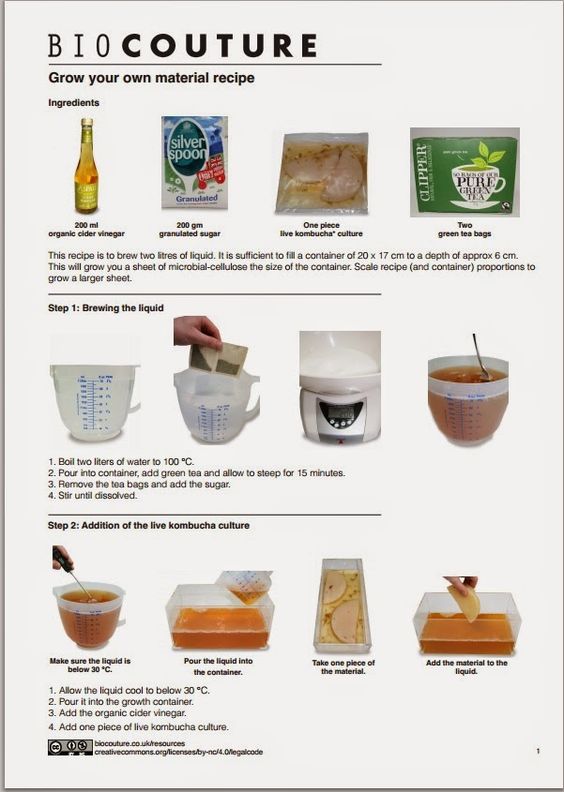
The following points were taken into consideration when I started to design the "Discovering local biomaterial: Boertex" recipe book:
-
Design the swatchbook in a way that serves your project. Designer perspective.
-
Analysing the properties and aesthetics of materials would suit a designer taste the best. This information can then be shared with designers in the future.
-
Who is your target for this recipebook? - anybody who is interested in taking material development to their advantage. The recipes are prepared so that anybody of the right age can cook safely. The difficulty in cooking is also relatively easy, so that everybody can access this information and experience.
-
Designer perspective for a swatchbook:
Include the following details when writing down your recipes:
- Preparation time.
- Cooking time.
- Ingredients.
- Tools.
- Purpose of material.
The process of material sampling is forever developing but the main idea is to choose one focused material before the 3rd of March 2021.
Step 1: Create swatches of Bioleather samples. Between 5 - 20 samples of different biomaterials with different streams of vegetable waste.
Design process: Fashion Garment brainstorm¶
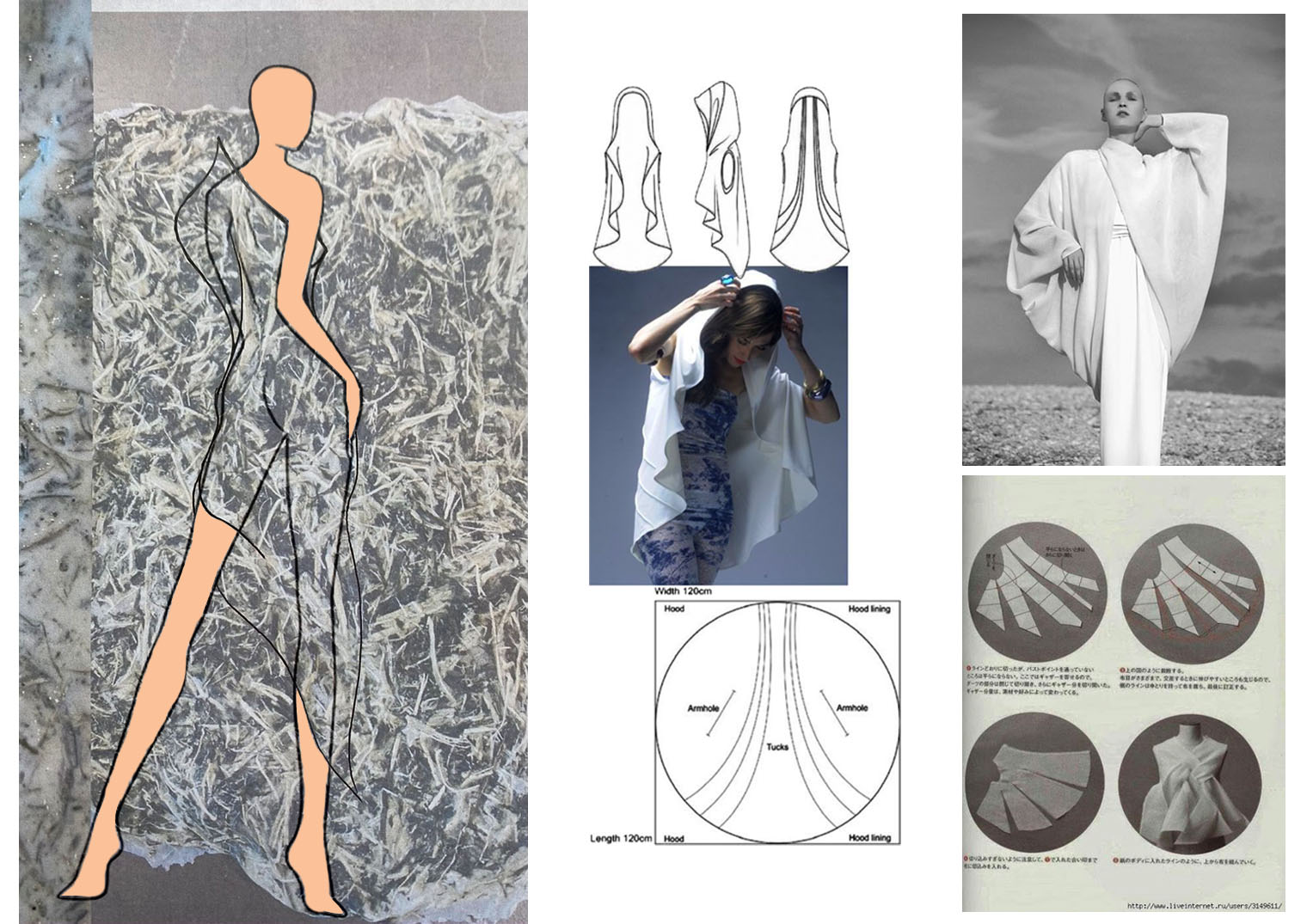
Ideas for the design of the Biogarment: Biomaterial construction.
- Weaving the different materials together.
- Zero-waste design.
- CMC + tomato for texture.
- Alginate over gridded hemp so that when it shrinks, it shrinks in an abstract way or into something else. Natural design with time.
- Biomimicry as part of the theme? Can I engrave the biomaterial in a way so that it looks like actual leather: snake skin for example?
Zero waste design:¶
Previous example from my project pitch:

-
Could I use my previous parametric model from the OS circular fashion week to make my prototype? The dragon scale?
-
Could I use the folding technique of my fisherman pants to make a parametric design?
Option A: Origami inspiration for garment construction.¶
The very frist thing that came to my mind when tackling the concept of a sustainable design was to construct the garment in a way that wouldn't require any add ons such as zippers, buttons and other closures. This meant that once I had drawn an idea for the garment:
A. I would have to look at ways that the material sheet could fold into itself so that it would support itself and hold.
B. Translate the pattern into Rhino and manipulate the interlockings of the sheet digitally. Then transfer this onto the laser cutter so that the slits, cuts and closings are cut precisely.
Option A struck me as the more interesting one as the art of folding Origami is a craft that I had applied in my previous designs as well.
The beginning of the research therefore started with youtube:
Folding techniques that catch my attention:
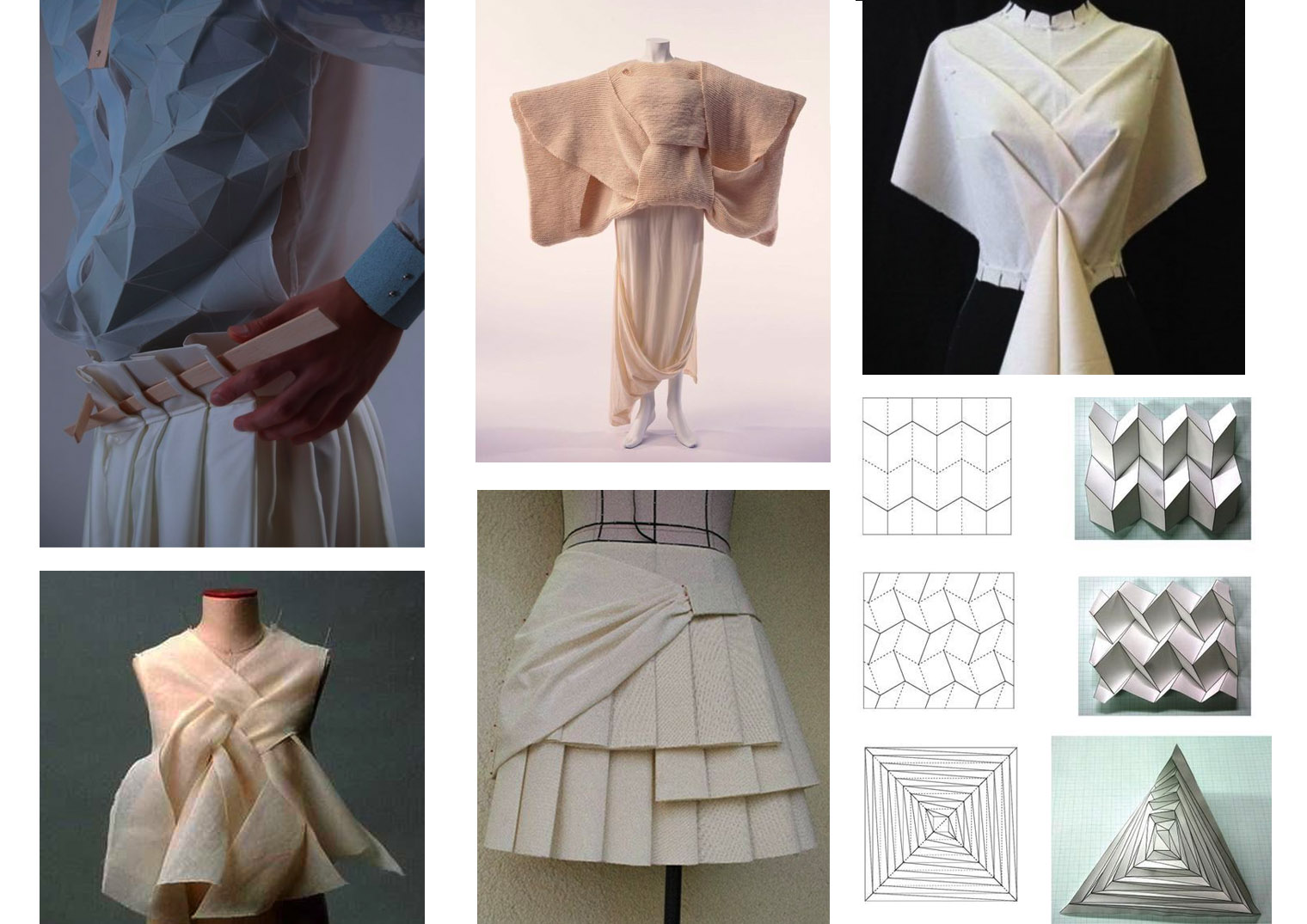
Origami Practise:
Cellulose print trial:

Grape Biojelly trial:
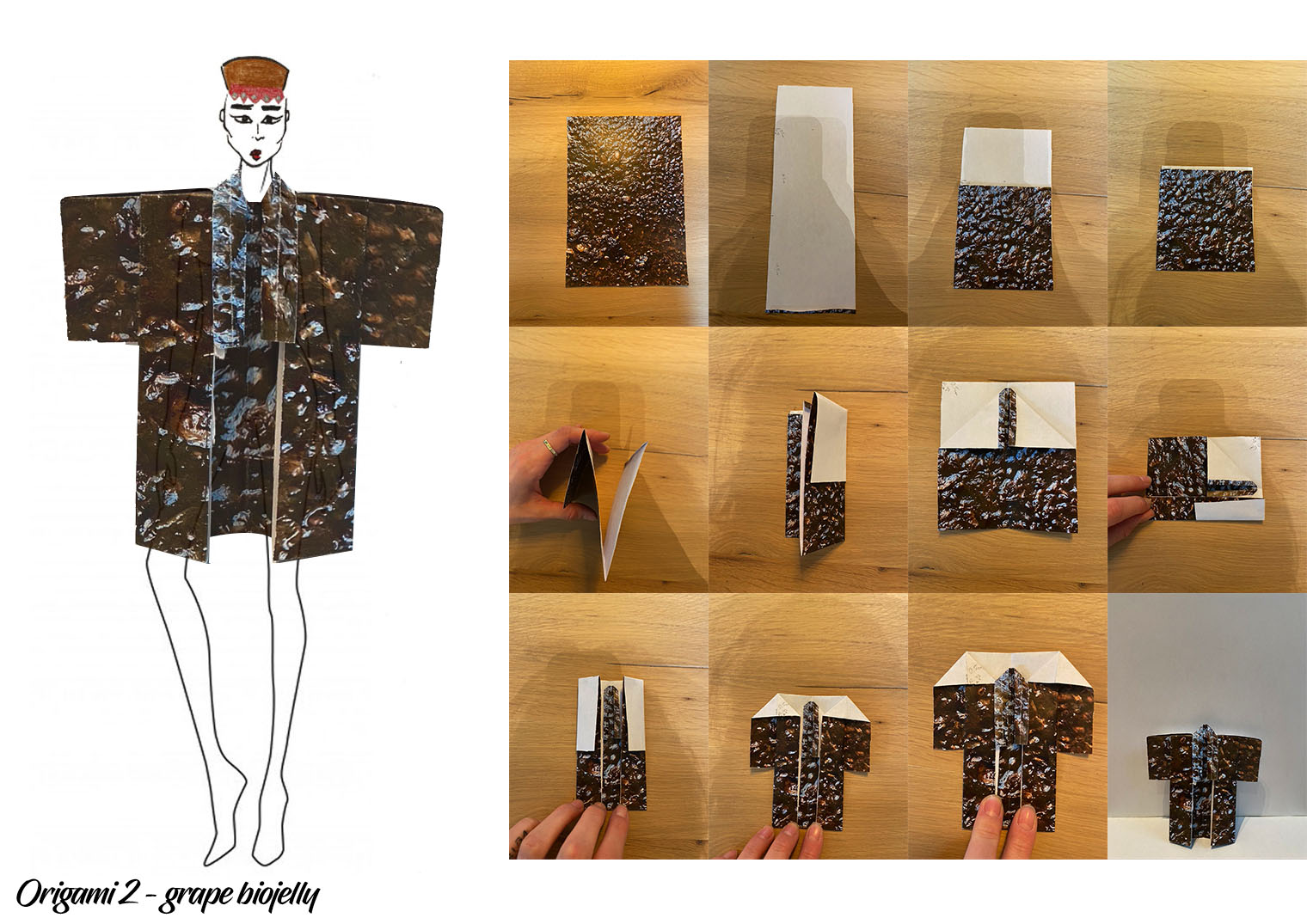
From mini kimono to Rhino:¶
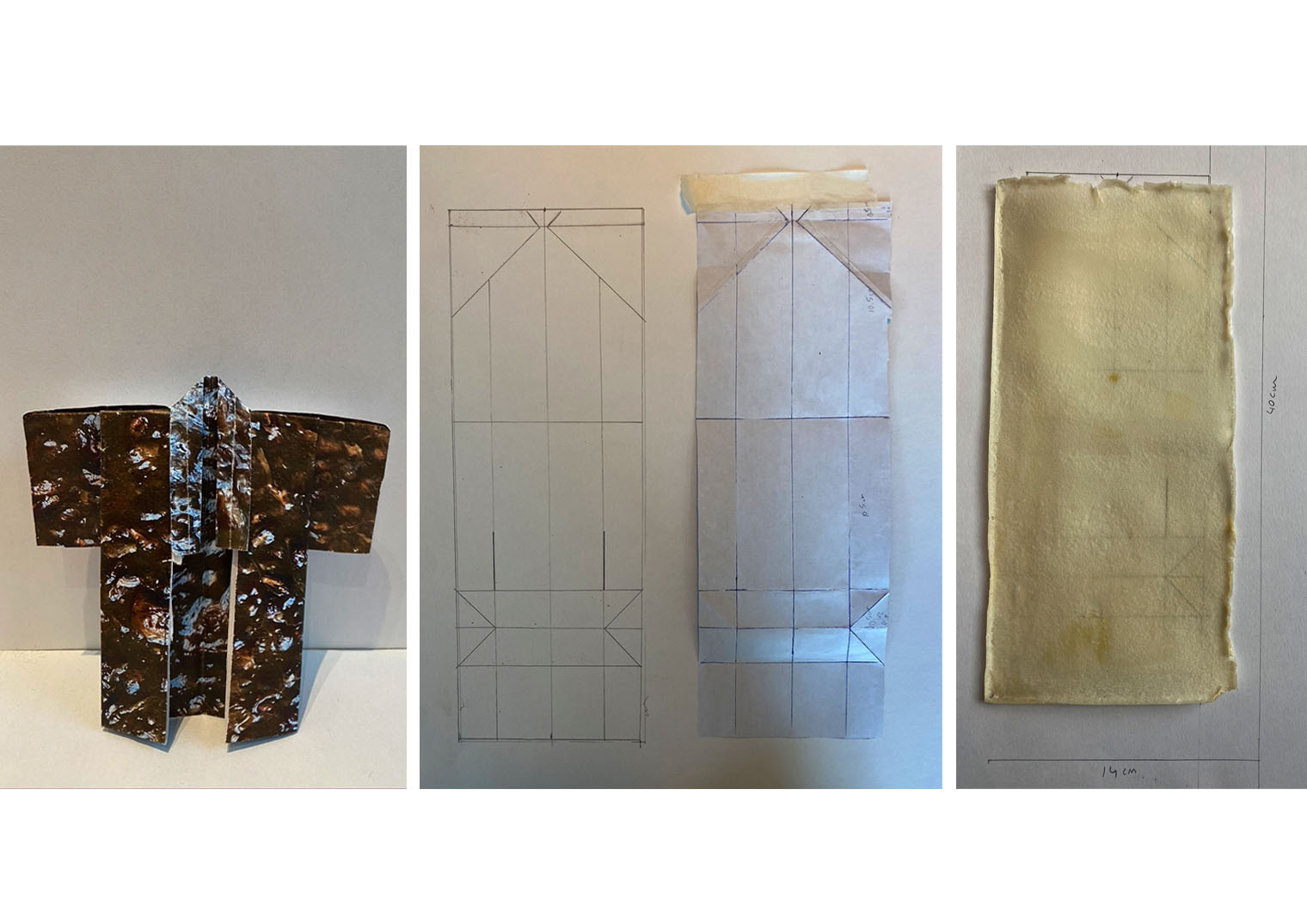
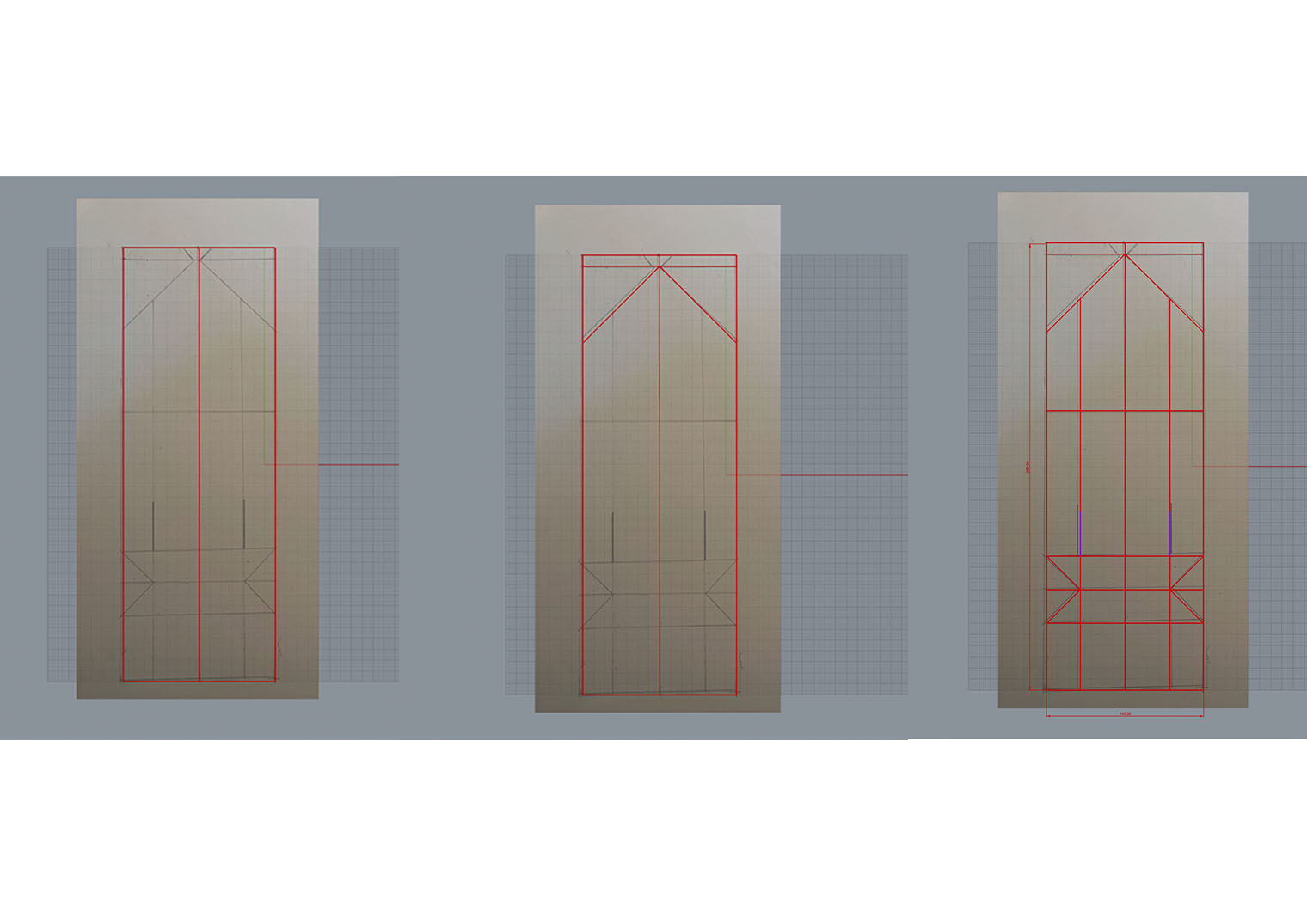
Overall origami designers:¶
Architectural: https://samiraboon.com/home/
Bridging art, science and technique leads to innovation. Well performing environments embody a soul. Like the Japanese, we highly value two qualities: Atarimae hinshitsu meaning the design works the way it is intended and Miryokuteki hinshitsu which represents "enchanting quality" and refers to the aesthetic appeal and emotional relation to the object.
- Origami masters, world known:
https://erikdemaine.org/curved/
http://web.mit.edu/chosetec/www/origami/
https://web.mit.edu/chosetec/www/
http://www1.zetosa.com.pl/burczyk/origami/index-en.html
https://giangdinh.com/portfolio/
Origami masters in garment form: aka fabric folding
Folded fashion:
https://www.julewaibel.com/
Prehistorical methods: Fibre extraction - Material development.¶
The initial idea of this project was to create a textile that could represent the system of Boertex. As the research continued there was no possibility to collaborate with chemists due to the current covid-19 pandemic. Having experienced how hard it is to push the Boertex material into a modern direction, it was time to look at the more traditional way to extract vegetable fibres using material culture and early technology from prehistory.
Sally pointer:¶
Following the nettle processing method: Splitting and processing:
source: https://www.youtube.com/watch?v=Suwzcaf2WtU&t=135s
Insert photographs of sally pointers results:
To do:
Get a spindle. Create or 3D print a spindle? SO that you can spin your tomato fibres into yarns?
E-mail sally and ask her if she has worked with tomato fibres before and if she thinks that this is possible?
Leather garment inspiration:¶
The idea is that if I I develop a bioleather that I am happy with, I could develop a more grunge or costume like garment.

Option B: Designing from the Biomaterial:¶
The total duration of the material development took about two months. To find a material that could serve as a base for the vegetable waste was hard but not impossible. Cellulose was the answer.
Why Cellulose natural rubber?:
Natural rubber, i.e. caoutchouc, is a natural polymer and col- lected as latex from rubber trees. This recipe combines natural rubber with microfibrillar cellulose (MFC) and carboxymethyll cellulose (CMC), creating a material that originates 100% from trees. Sheets produced from this material are flexible and firm, and the feel mimics that of leather. The material softens in water. The sample has the distinctive odour of natural rubber.
source: https://aaltodoc.aalto.fi/bitstream/handle/123456789/44165/isbn9789526088037.pdf?sequence=1&isAllowed=y
As this project is highlighting the problem of vegetable waste, the combination of using a recipe that is made 100% from trees made sense in the design of the material. This is were the original idea behind the cellulose + artichoke fibre recipe came from.
First few samples of the cellulose + artichoke fibre:
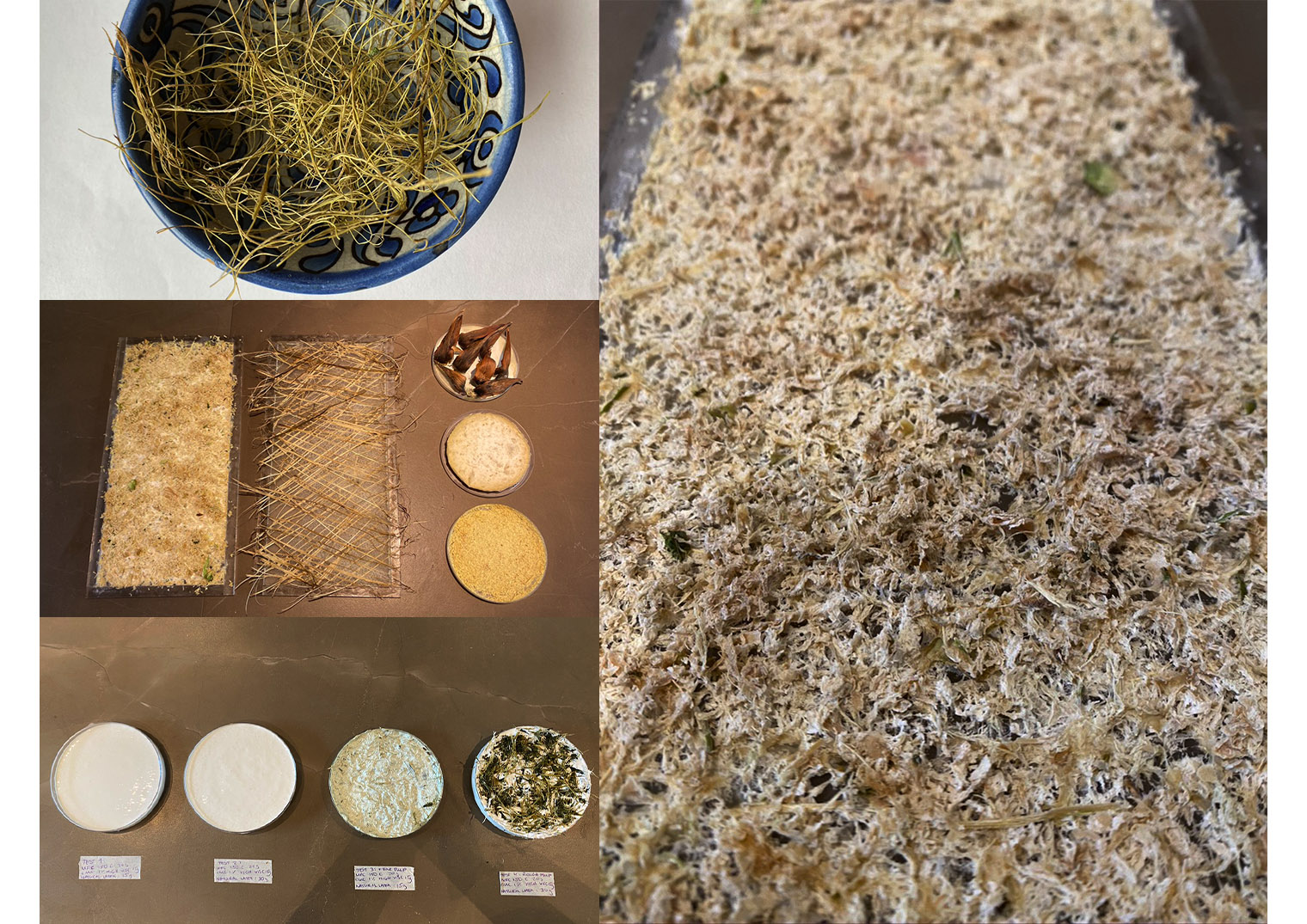
A cellulose sample that would suffice for this project:
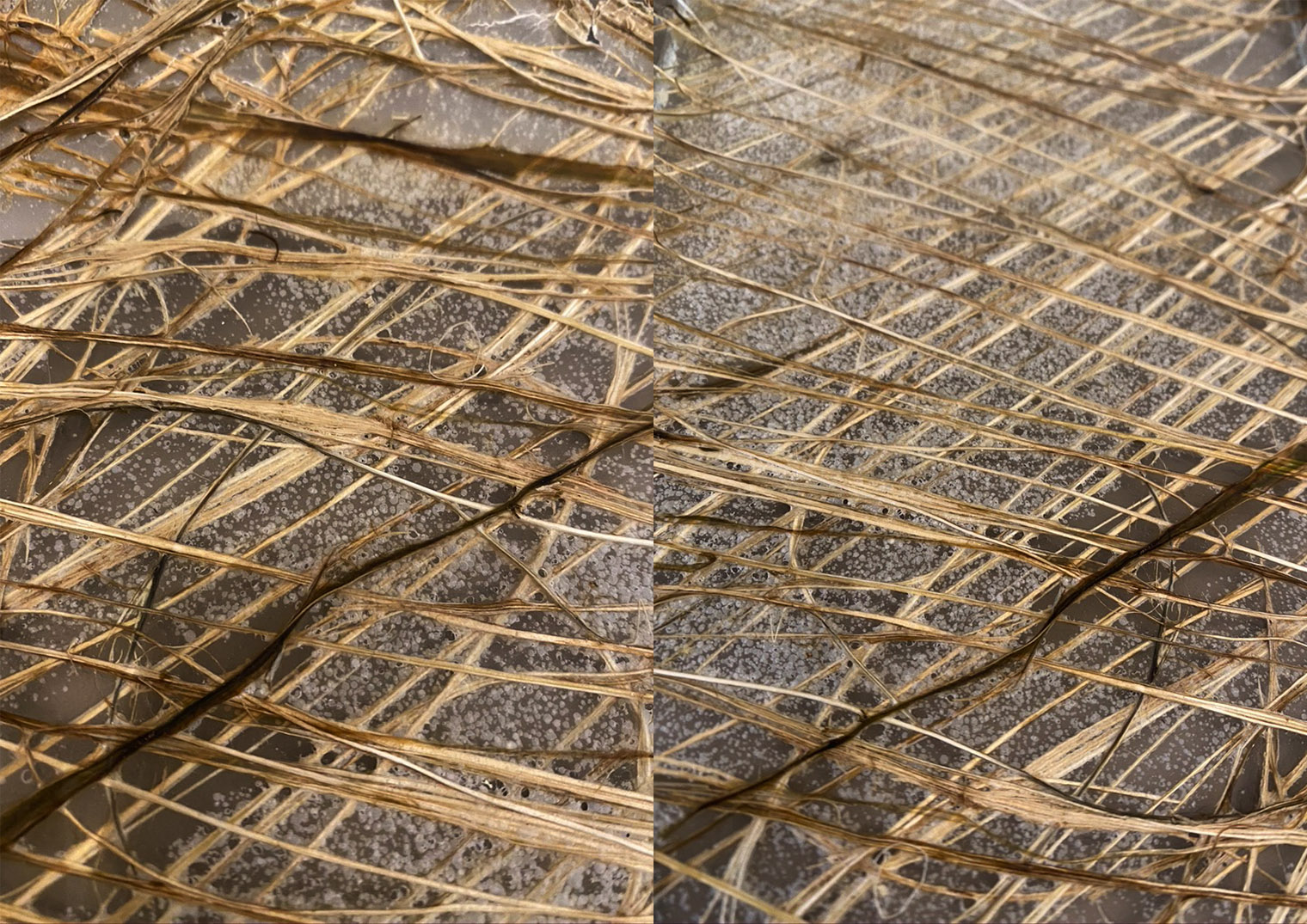
This material would lay as the foundation for the designed final garment because it held the most unusual yet impressive structure. Making it look nice means that it can serve as a substitution for other harmful fabrics.
Now the material choice was clear. There were many ways to tackle the actual development of the garment from the selected biomaterial: Natural rubber latex + Artichoke fibres. The following methods were applied for the start of the brainstorm session:
A. Research previous biomaterials that had shared similar properties and study their behaviour when manipulated. Problem: The only material that shared similar structure to this cellulose based material was actual sheet of paper.
B. Ask the general audience what they could see when they touched the developed sample. What else other than a garment could be made with this developed material? Problem: Most of the answers were products such as accesories or bags. These products wouldn't round the concept of Boertex fully seeing as it has to meet the requirement of a fashion design aesthetic. Smaller items were welcomed but garments propose a more challenging way of designing and this could push the project into another level of excitement.
..............
Shaping the garment:¶
The dimensions and design for this final garment prototype had yet to be decided. The final protoype would be used in the laser cutter on a material that mimicked the material structure of the Cellulose test that was produced previously. The thickness of this material overall is a 1mm and the settings for the laser cutter are adjusted to the settings for the Kombucha laser cutting. This is because the Kombucha leather is an organic bioamterial and Kombucha has similar properties to that of the cellulose test.
Collaborating with designer: Cristiano Carciani. Having studied at a fashion design university previously, it seemed logical for me to reconnect with my pattern Cutting, Draping, and Construction & Realisation teacher. The problem that I was now facing was the design aspect of the project.
As Boertex is based on the artichoke waste that was received from Lindenhoff, I made a simple collage to represent my idea behind the artichoke dress:

Designing the final garment (in order from top to bottom):¶
- Designing the type of garment:
The design of the garment would heavily rely on the outcome of the baked material. This is why the design process was running run alongside the material development process. The following illustrations were made at the same time so that there was a general idea of what kind of garment could be constructed using separate layers of bio fabricated sheets. Layers and ruffles were both incorporated to make the outfit feel feminine and light, touching on the theme of nature and it's blissful beauty.

Why incorporate the dancer aesthetic to this project?
As I researched the web for inspiration I came across:
Life-Size Origami Becomes a Fashion Statement in Dramatic Paper Costumes Worn by Ballet Dancers: Melika Dez and Pauline Loctin. source: https://www.thisiscolossal.com/2018/10/origami-ballet-costumes/
"The result, PLI.Ē Project, fuses Dez’s skills as a movement photographer with Loctin’s expertise in paper art, and showcases dancers around the world wearing hand-folded paper costumes."
"Dez shares that the project came together in two phases: first as a studio shoot with professional ballet dancers wearing Loctin’s creations, and later as a worldwide endeavor photographing dancers and costumes outside. “Paper can be a fragile material to work with and that is exactly why we decided to make the impossible, possible. No matter which element we would be confronted to, water (rain), wind, we wanted to show that we are limitless.”
By taking a material that is hard to work with, the design process is more challenging. Because of this, the artist is pushed to think outside the box by testing their own design perspective and capabilities. The idea of using an unknown combination for a material and designing using technology (Rhino & laser cutter), could only mean that the result for Boertex would turn into something of it's own and perhaps even result in more curious or strange project as a whole.
- Baking the biomaterial:
At first the idea was to laser cut an acrylic sheet with borders as casting material for the final piece.
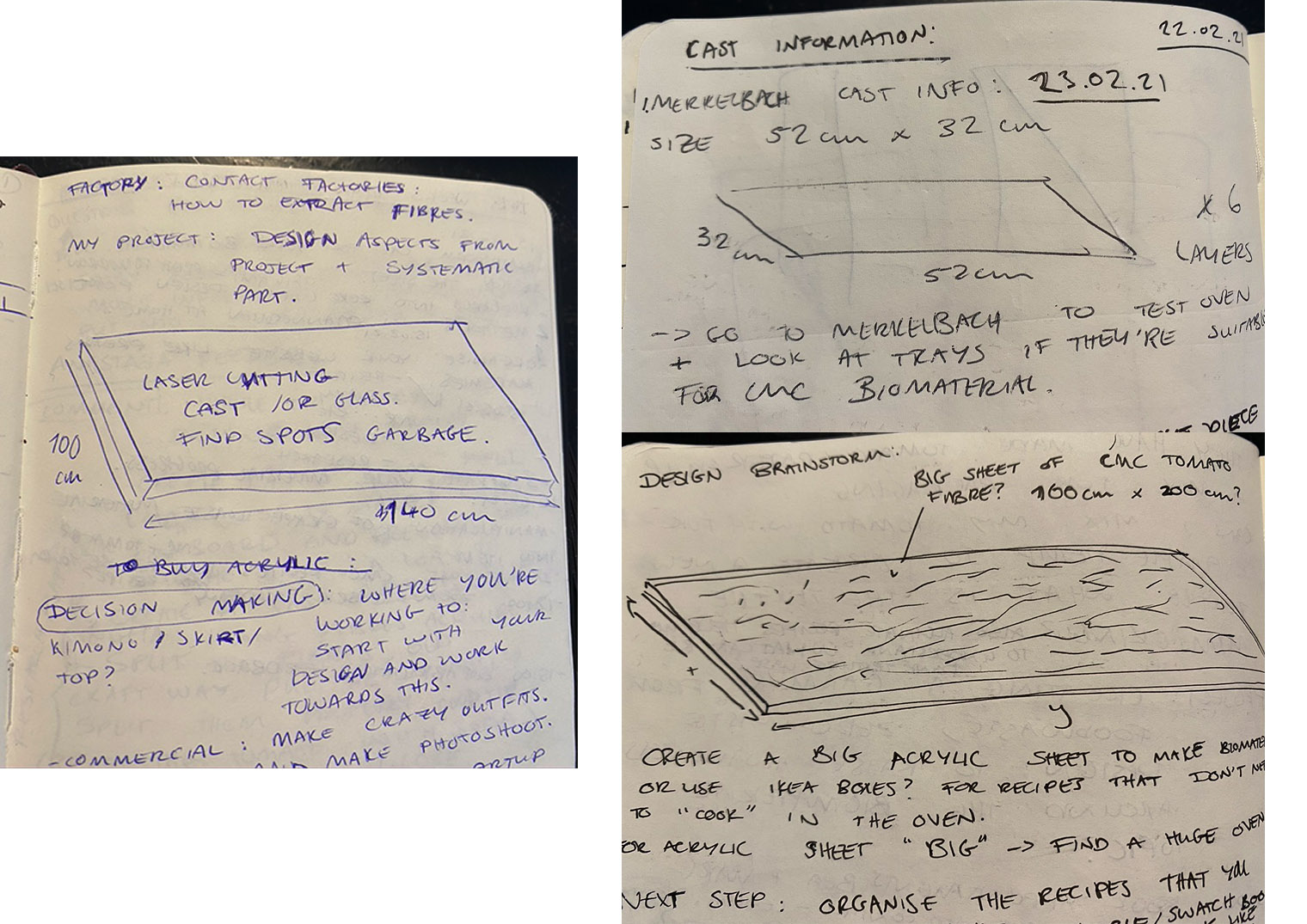
Though on the 20th of February 2021, I was lucky to find a restaurant that was willing to collaborate with me and allowed me to use their oven.
Oven details:
Combination oven: hot air and hot air with steam. Ventilation can be set to two types. Temperature between 0 - 275 degrees celcius. Oven trays: 52cm x 32cm x 1cm 7 trays fit in at once.
Baking off the cellulose material would mean that I would need a big enough oven, with larger trays so that the design dimensions were less limited. The total number of oven trays were importance as well as many sheets had to be baked. This served useful so that there was enough back up material in case one of the sheets would rip or break during the mannipulation in the material. The oven trays would also need borders so that the cellulose could be casted while it was still in it's liquid form. These edges allow for the material to stick to the sides of the tray while baking and as a result squared sheets of equal sized could be casted.
Important factors to check before using Merkelbach's kicthen for cooking off the biomaterial:
-
Will the material of the oven tray affect the composition or drying of the cellulose natural rubber?
-
Clean the oven trays and oven before baking.
-
Check that you can book a slot of 2-3 days for the cook off biomaterial. Make sure that your schedule doesn't collide with the chefs/staff in the restaurant.
-
Is the ventilation system inside the oven strong enough? Avoid any uncecessary condensation. This will stop the material from drying.
-
When upscaling to a larger tray be aware to always put baking paper on top and also check on material every 2 hours. The cooking time may be longer or shorter depending on the spread and density of the material.
-
Preparing the yarn/fibres from the artichoke plant:
The following vegetables were tested in combination with the cellulose natural rubber recipe: - Tomato waste + cellulose natural rubber latex - Bean sprouts + cellulose natural rubber latex - Cardoon Artichoke plant + cellulose natural rubber latex
In the end the Cardoon artichoke plant worked the best because it contained the longest cellulose fibres. These fibres could be placed on top of the biomaterial so that the material changes behavioral properties. Co - designing with the structure of the vegetable.
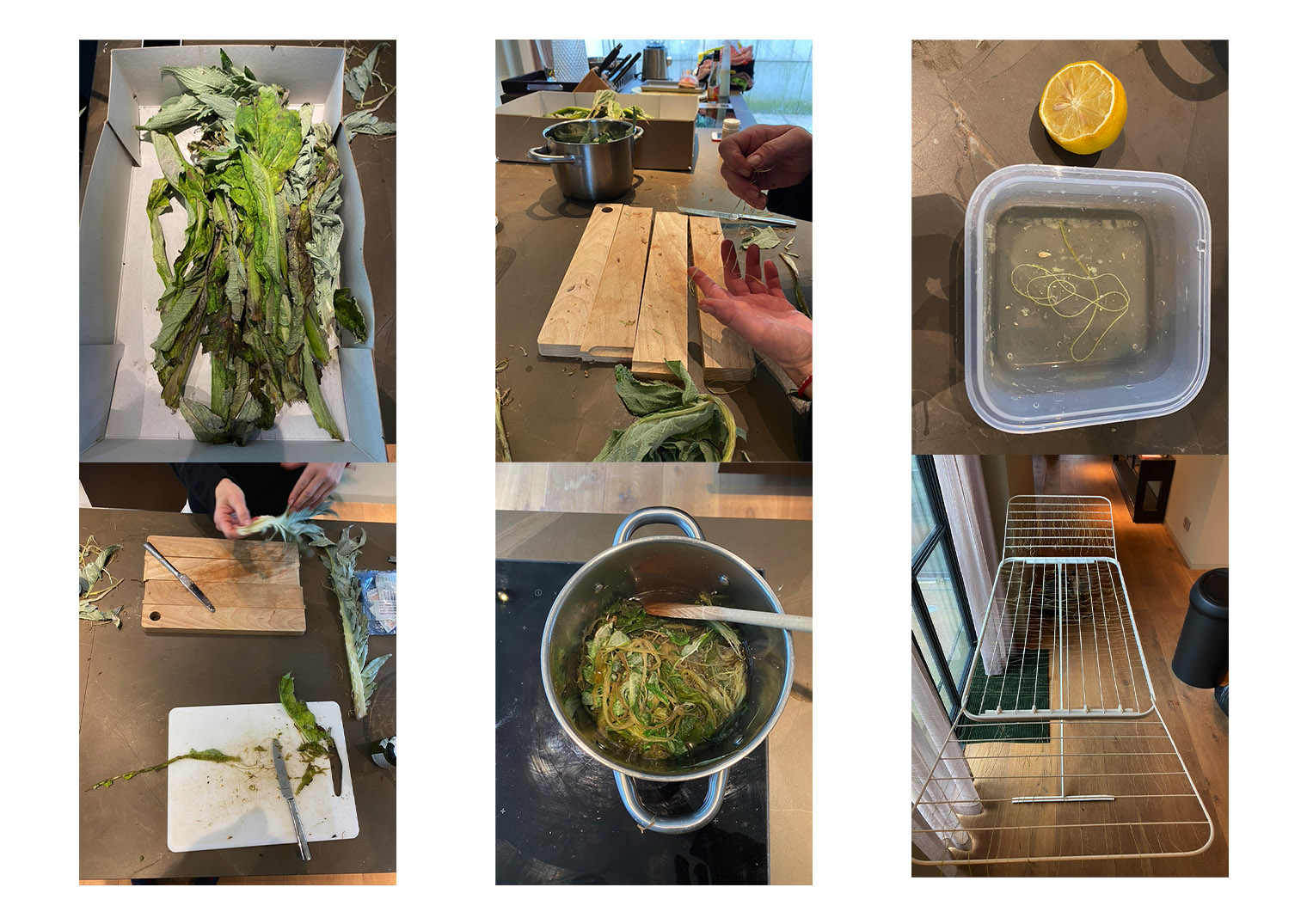
- Prototyping the garment:
Testing the manipulation of all of the paper sheets to see how the dress outfit can be constructed.
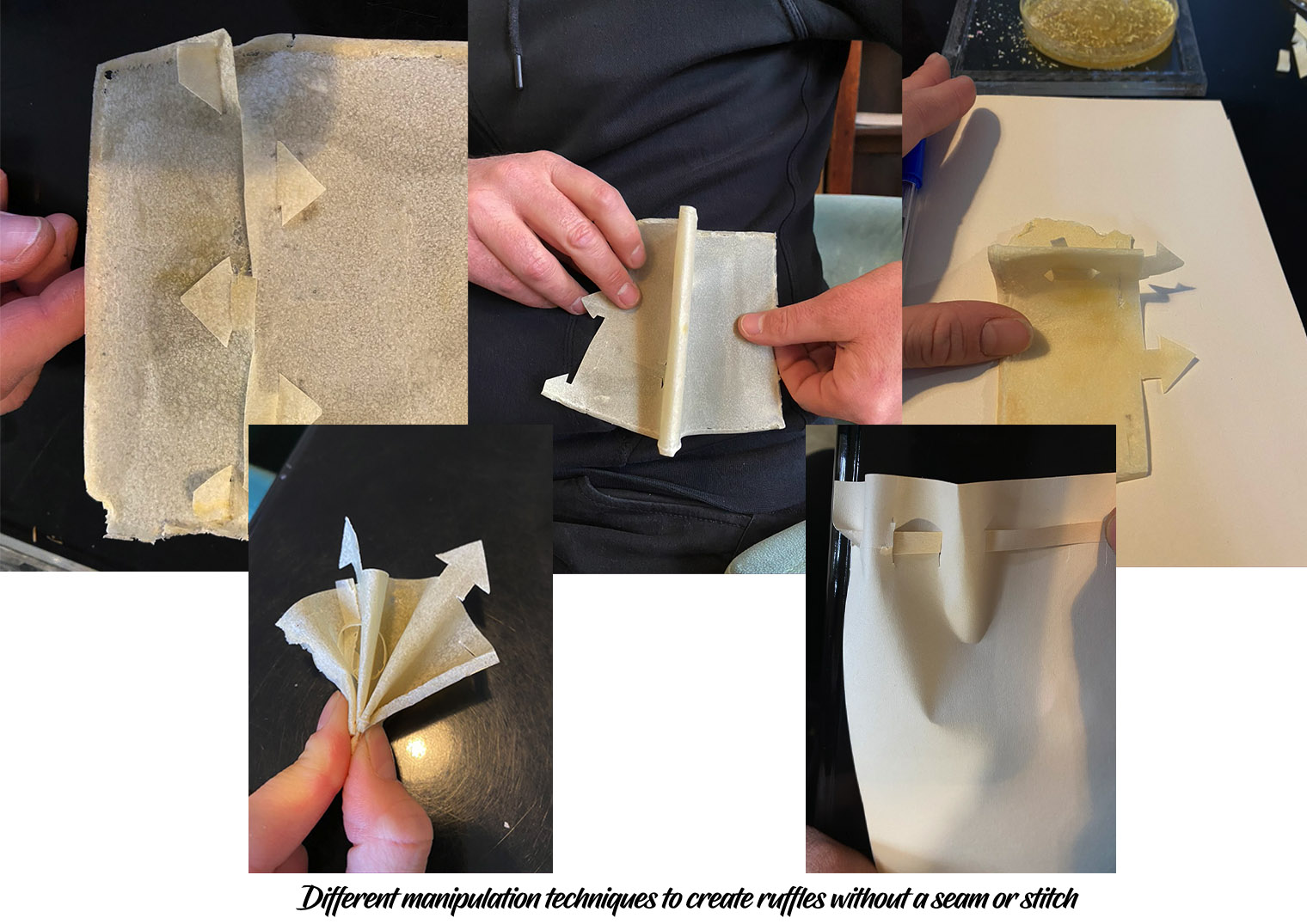




Sketches following the thought process throughout this project:
Initial sketch:

Designing the top of the garment:

Arrow manipualtion for interlocking the pieces together:

Calculating the yield for the oven trays, castin calculations:

Once the paper pattern was altered and fitted a tranlsation of the pattern could be made in the programme Rhinoceros 3D:
Screenshots of the model:
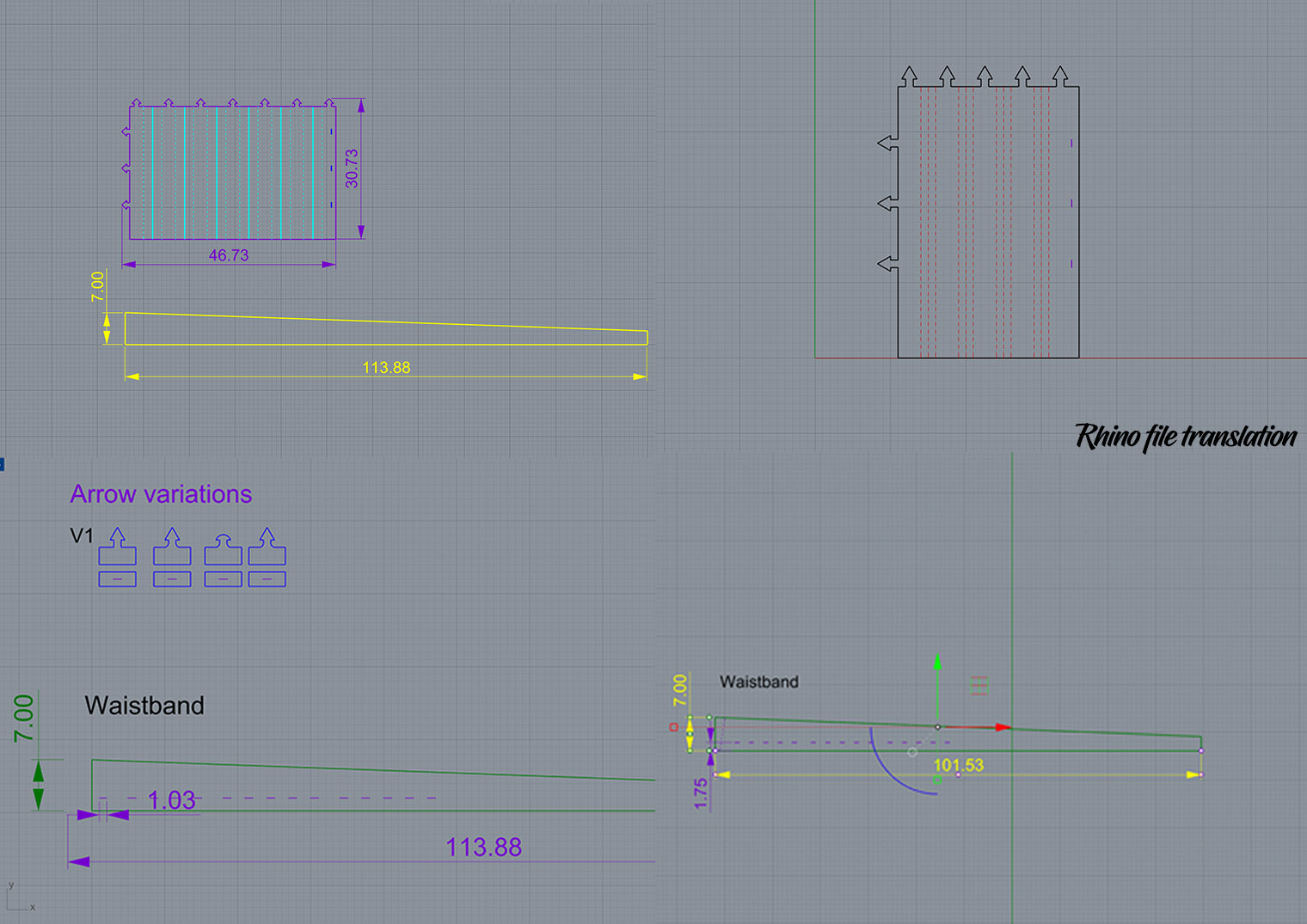
- Cooking off the biomaterial: Restaurant Merkelbach biofabrication:



The result: Texture for the final garment:

- Pictures of laser cutter:
Microscopic zoom on the biofabricated material:


- Final outfit result:
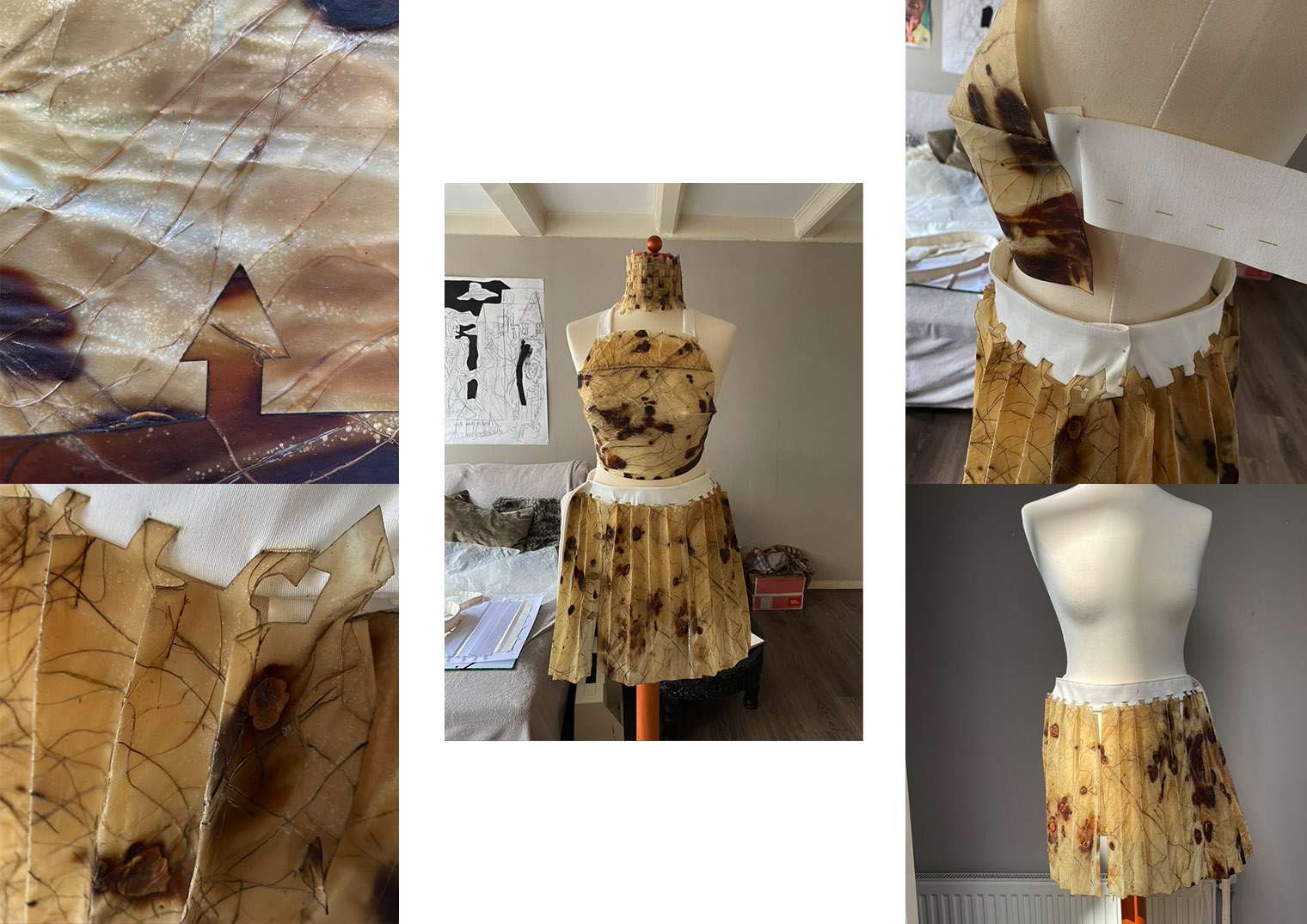
Ready for the photoshoot.